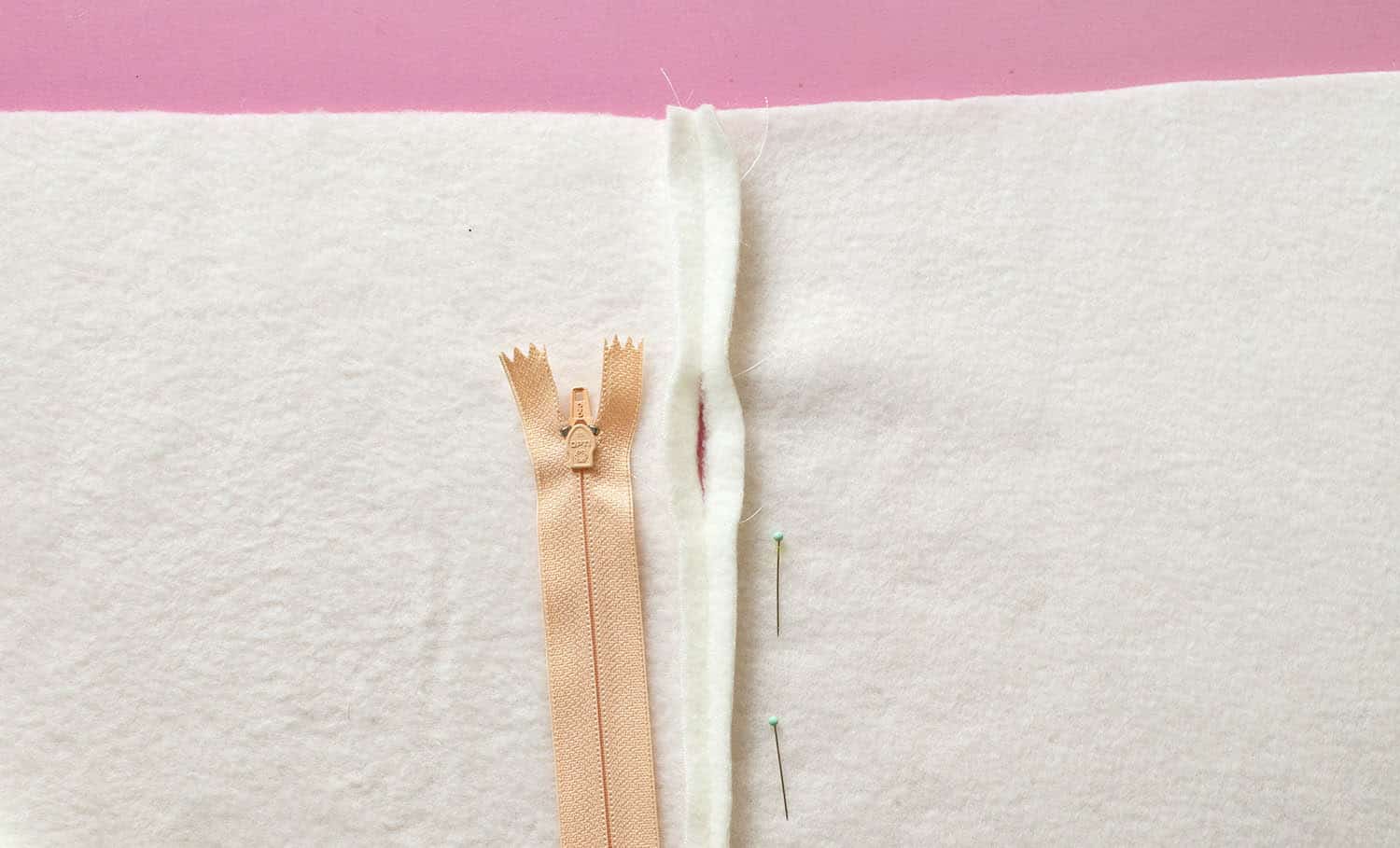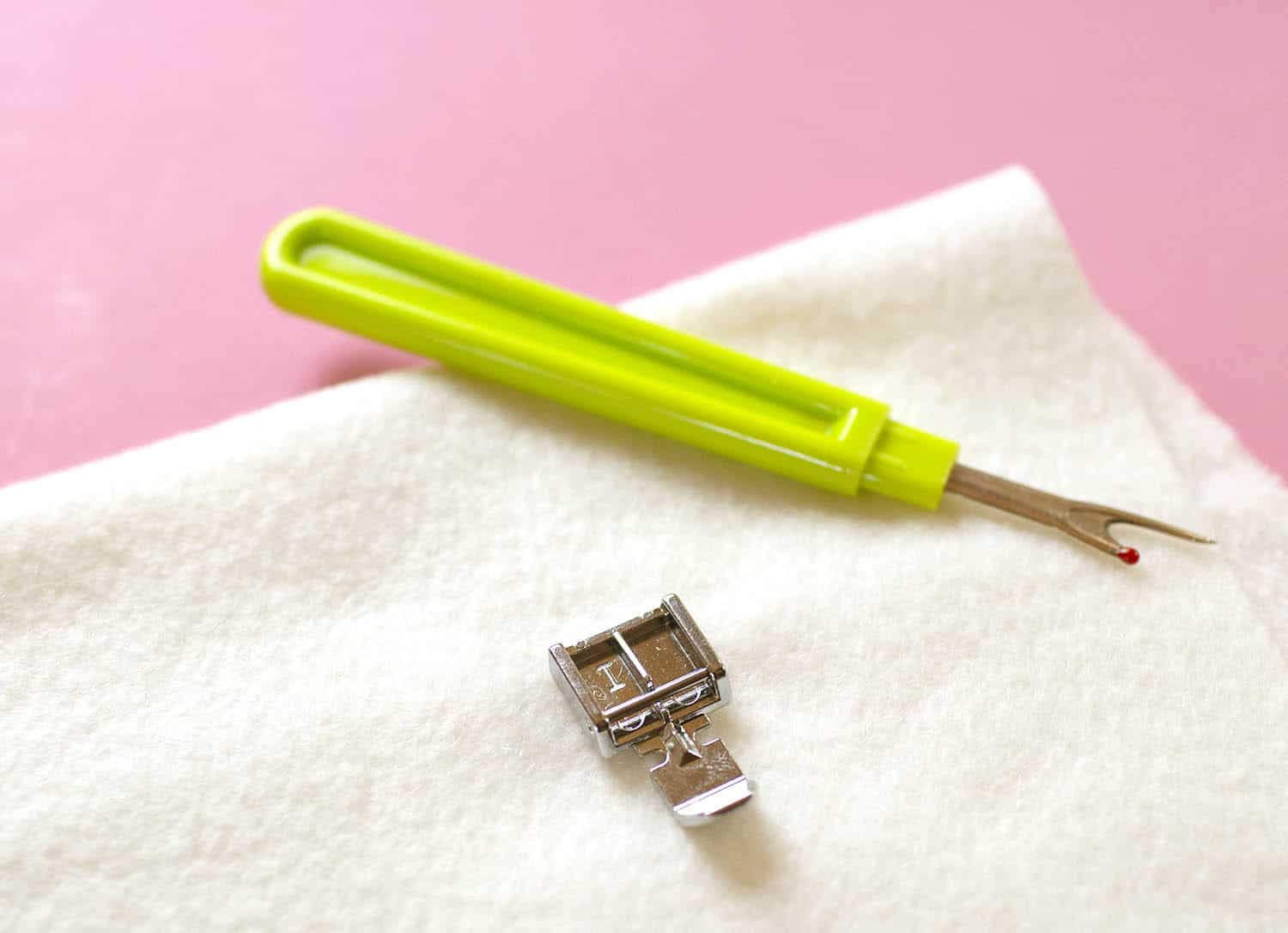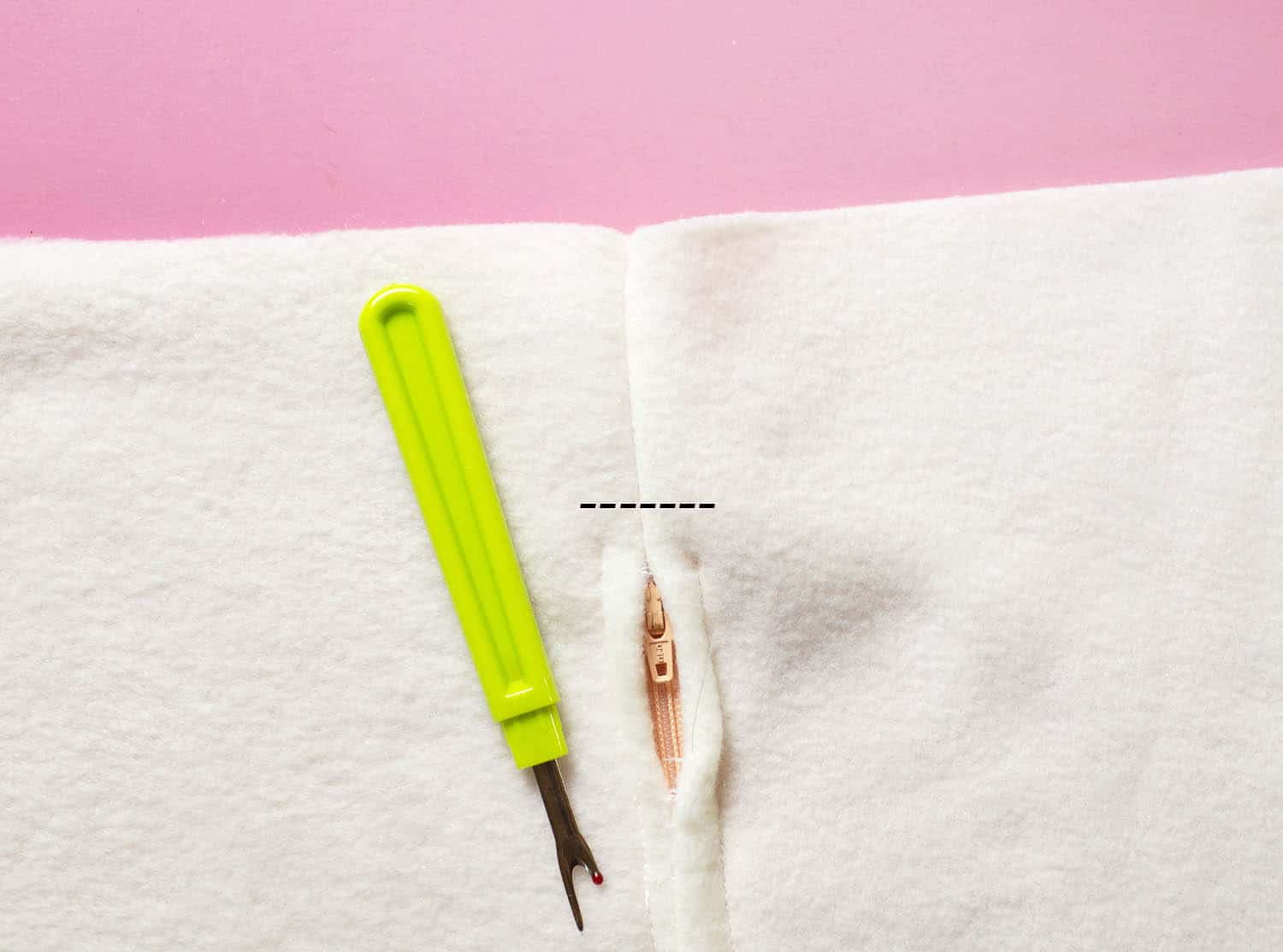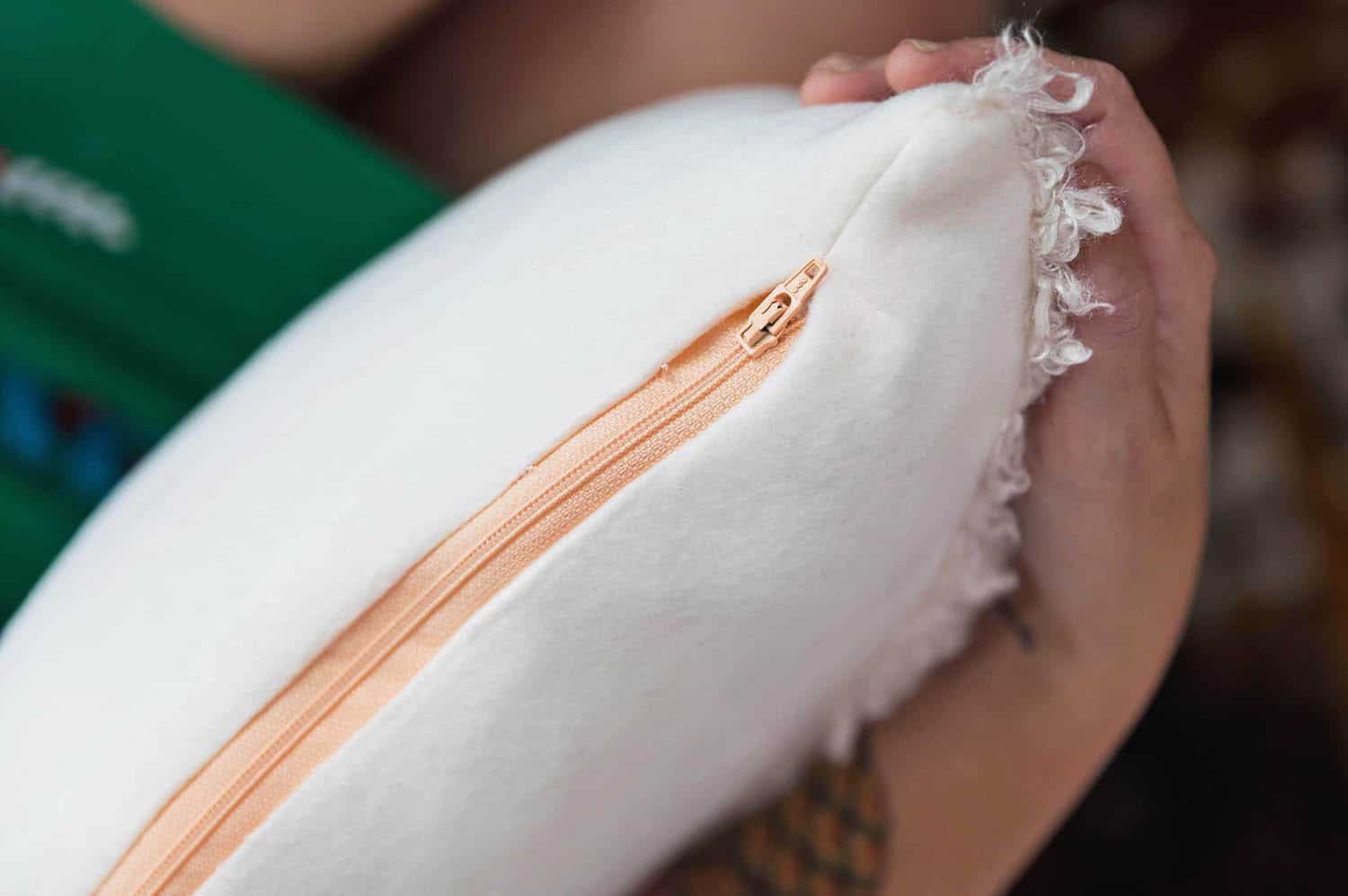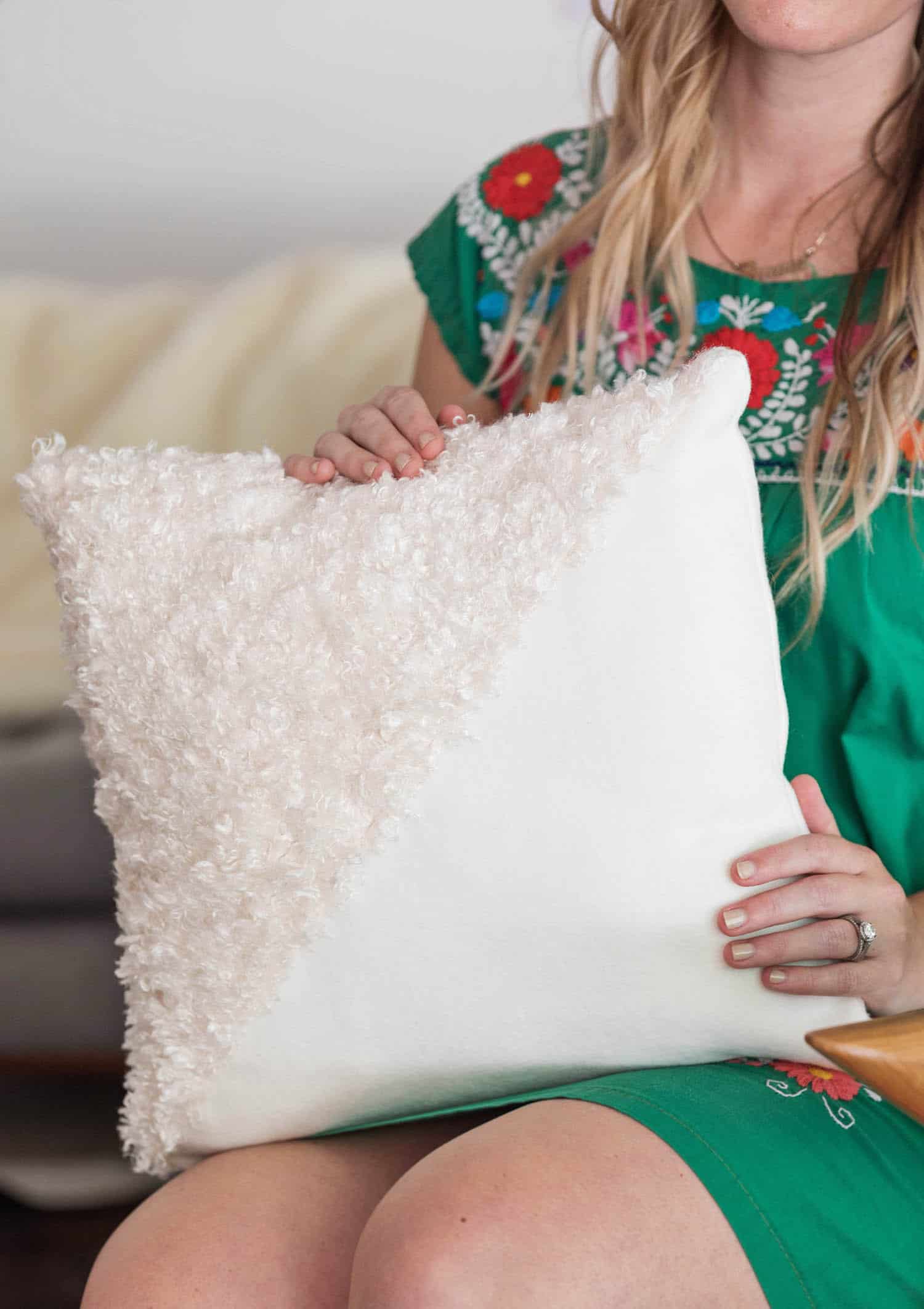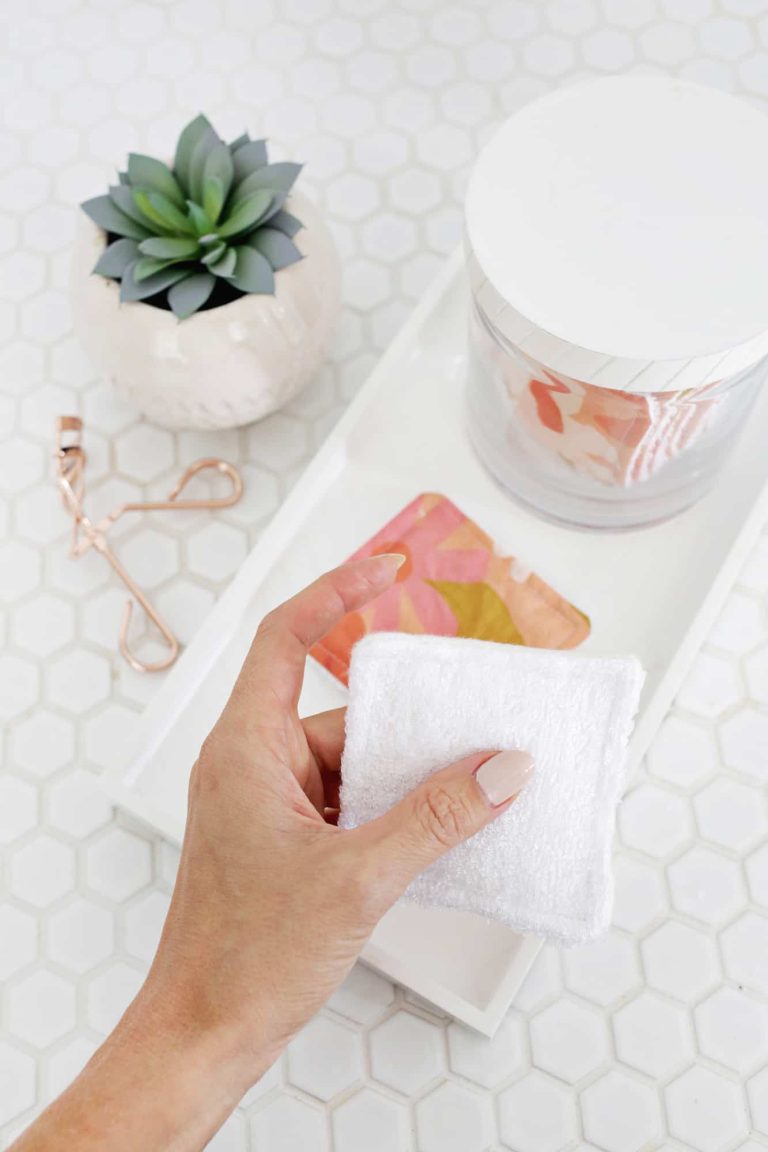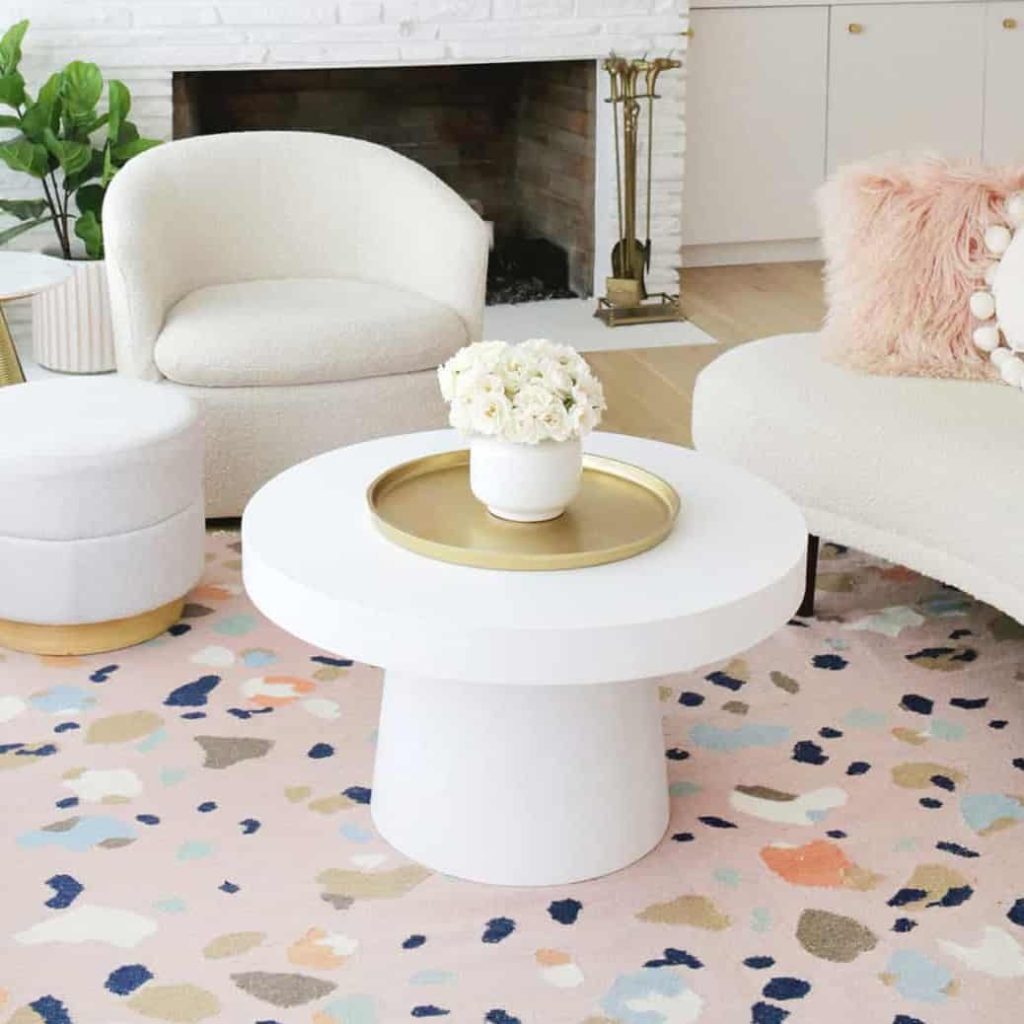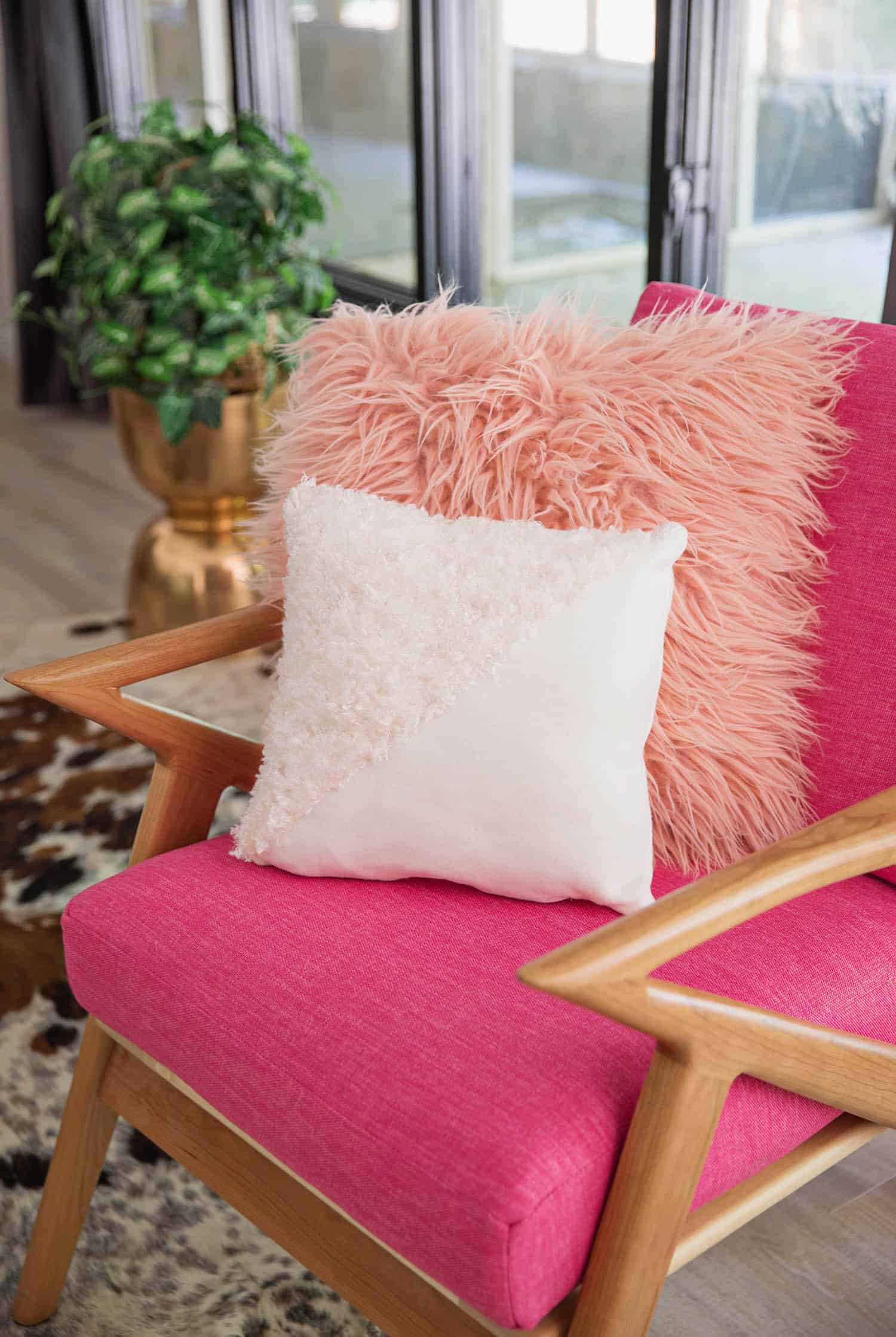 I love a good throw pillow. And recently, I wanted to sew a couple more for my living room.
I love a good throw pillow. And recently, I wanted to sew a couple more for my living room.
As a household that has two dogs (that we allow on our furniture), I’ve noticed the throw pillows that have a removable cover tend to last longer for us because I can either throw them in the washing machine as needed, or if the pillow has a delicate fabric, I can get them dry cleaned.
So, I knew I wanted to sew a zippered throw pillow so I could remove the cover as needed. And I thought I’d share the process, because I know adding a zipper to anything used to intimidate me, as I’d consider my sewing skills low to intermediate (leaning toward low … ha).
Also, because I know you might be curious, my pink armchair is from Joybird (as well as my sectional). You can see them more in my living room tour if you’re interested.

But the steps for adding a zipper could work on any throw pillow—it doesn’t have to have this specific design.
Watch the video below to learn how to install a zipper:
Also, if you’re thinking a zipper just isn’t the look you want, you could always make an envelope pillow instead.
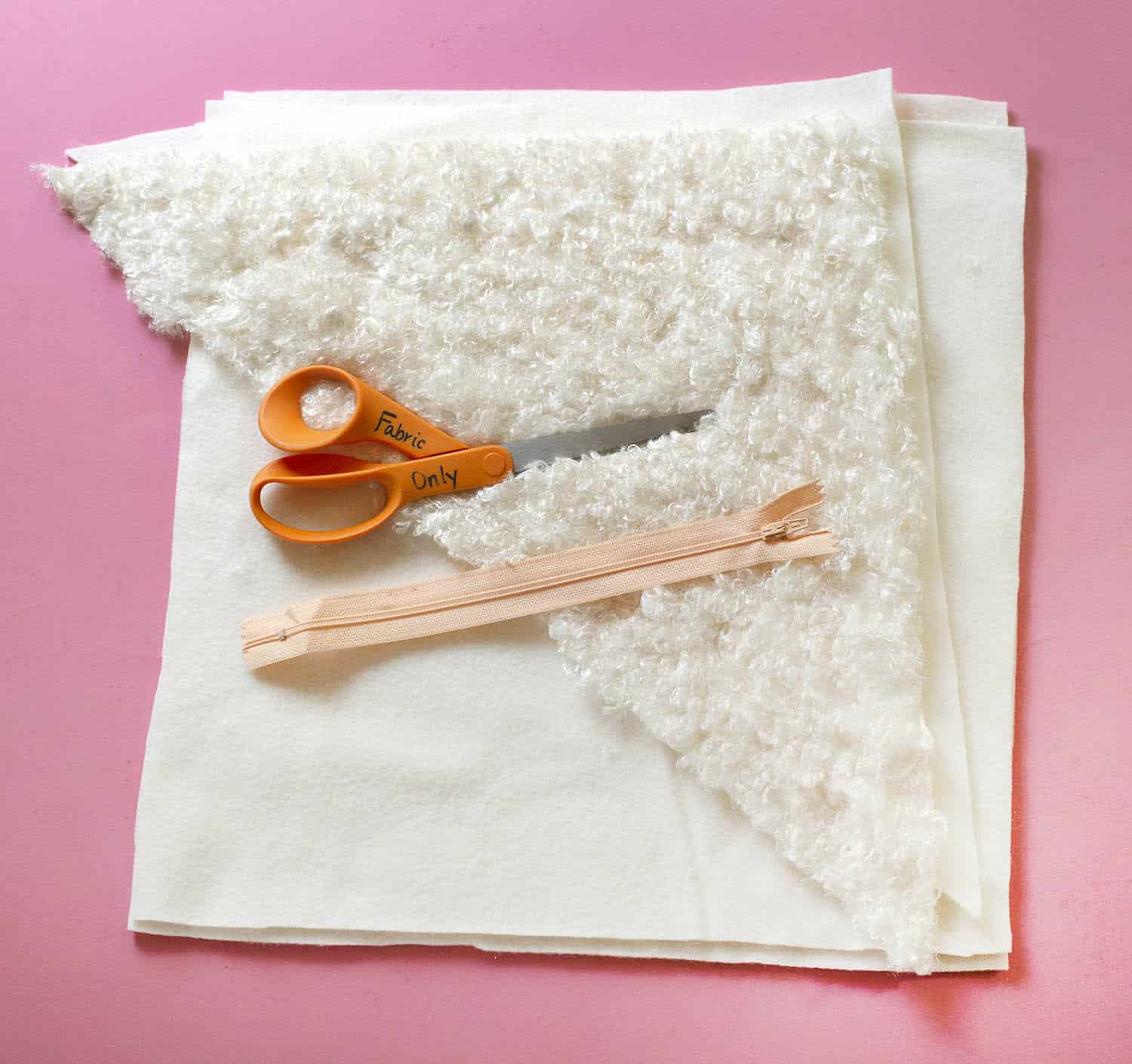
-fabric for the back and front of the pillow
-zipper that is smaller than one side of the pillow
-pillow insert or stuffing
-matching (or contrasting) colored thread
-scissors
-seam ripper
-sewing machine + zipper foot
-iron + ironing board
How much fabric you need will depend on the size of pillow you want to create. I love a mix of larger and smaller throw pillows. I usually pick out my pillow insert first and then base my pillow size on that.
You’ll want your fabric to be 1-2 inches bigger (depending on how much seam allowance you like to work with with) than the final size you plan to sew.
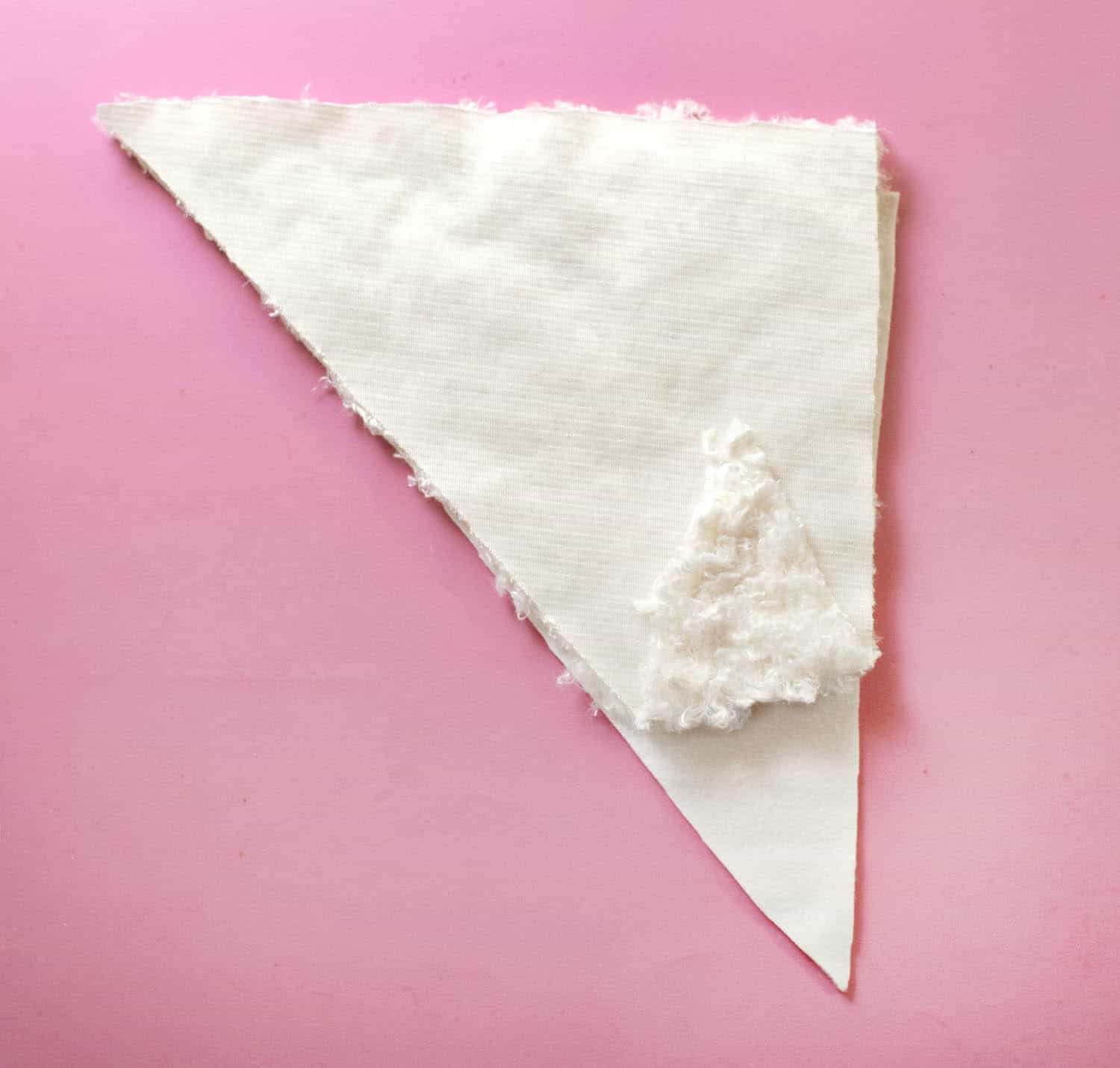
Depending on the type of fabric you are working with, you may want to go ahead and iron or press out your seams once you’ve stitched this.
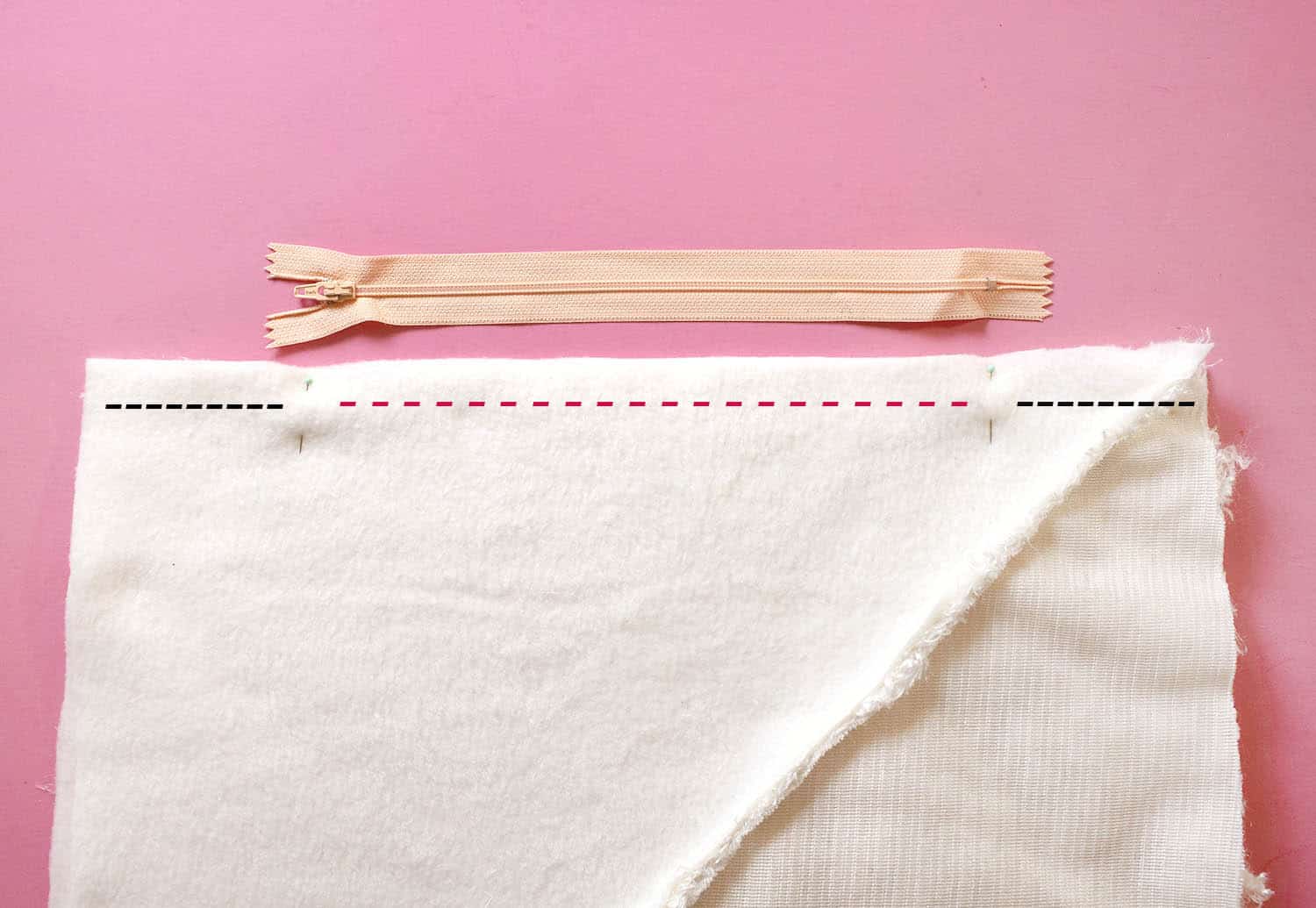
Stitch up the areas that will not contain the zipper normally (in black in the photo above). Then add a looser stitch (that will be easier to seam rip out later) to the zipper area.
Press open this seam using an iron if your fabric allows—otherwise just press it open as best you can.
